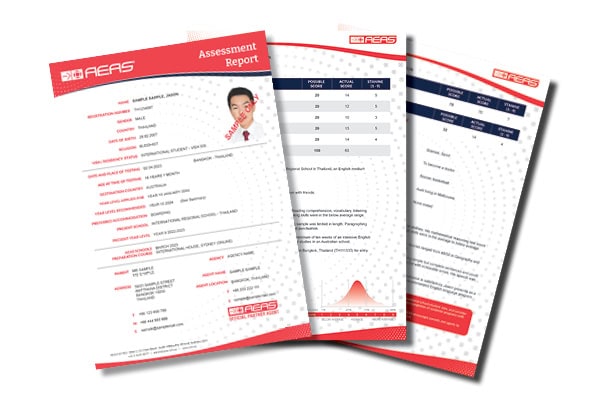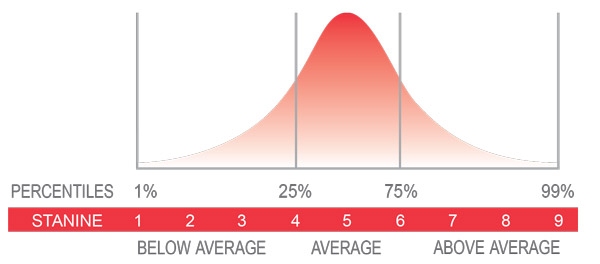
What information is included in the AEAS test report?
The AEAS Report provides parents, schools and, if relevant, education agents with independent and objective data on each student’s educational capacities and functioning covering English language, mathematical reasoning and general ability.
The AEAS Report prepared for each student provides
- an overall English language proficiency score out of 100
- an English language score for each sub test and a normalised score (stanine)
- a recommendation on the minimum number of weeks of intensive English language study required to prepare students for an English medium classroom
- a raw score and normalised score for general ability and mathematical reasoning tests
- a recommendation on school entry level
The AEAS Report assists parents, students and their agent in identifying the school that will best meet their needs.
There is no pass or fail score for the AEAS Test. Each school determines a minimum requirement for entry to their school.

How many weeks of an intensive English language course will a student require?
SCORE |
LEVEL |
WEEKSUpper Secondary School Entry
|
WEEKSLower Secondary School Entry
|
WEEKSPrimary School Entry
|
|---|---|---|---|---|
| 0-25 | Beginners | 40-48 | 30-40 | 12-20 |
| 26-35 | Elementary | 30-40 | 20-30 | 6-12 |
| 36-45 | Pre-Intermediate | 20-30 | 12-20 | 4-6 |
| 46-60 | Intermediate | 12-20 | 8-12 | 0-4 |
| 61-70 | Upper Intermediate | 8-12 | 4-8 | 0 |
| 71-79 | Pre-Advanced | 4-8 | 0 | 0 |
| 80+ | Advanced | 0 | 0 | 0 |
*Year Levels are based on Australian education system.
Click here to view a Country, Age and Year Level Conversion table

Stanine scores are normalised scores with a mean of 5 and a standard deviation of 2. A score of 1-3 is below average, 4-6 is average and 7-9 is above average. Stanines are an effective means of reporting results in broad terms.
The population for English language proficiency results is students from backgrounds where English is not their first language.
The population for general ability and mathematical reasoning results is all students regardless of their language background.
The general ability and mathematical reasoning results should be interpreted together with school reports.
How long does it take to receive the AEAS test report?
The AEAS Report is an individually prepared three page report. A comparison between the AEAS results and the student’s recent school reports provides an indication of academic performance. The student’s preferred course of study, long term goals, interests and activities and any health considerations are also included.
The Report is prepared at AEAS head office and forwarded to
- The student and his/her family
- The school(s) the student is applying to
- The student’s agent (if applicable)
Reports are available within 10 business days of testing or sooner. Urgent reports are prioritised.
Schools receiving an AEAS Report should advise the parents following confirmation of decisions regarding enrolment and/or commencement.
How does the AEAS test compare to IELTS and CEFR?
AEAS SCORE |
AEAS |
IELTS |
CEFR |
CEFR DESCRIPTION |
|---|---|---|---|---|
| 33-45 | 20-30 weeks | 4.0 | B1 | Independent user |
| 46-56 | 15-20 weeks | 5.0 | B1 | Independent user |
| 57-66 | 10-15 weeks | 5.5 | B2 | Independent user |
| 67-79 | 4-10 weeks | 6.0 | B2 | Independent user |
| 80+ | 0 weeks | 6.5 | B2 | Independent user |
| 7.0-7.5 | C1 | Proficient user | ||
| 8.0 | C2 | Proficient user |
A comparison of AEAS results with IELTS scores is provided for students 16 years and older applying to study in Years 10-12.
Click here to view a Country, Age and Year Level Conversion table
IELTS tests are generally considered suitable for students 16 years and above.
The Council of Europe’s Common European Framework for Reference of Languages (CEFR) is a widely accepted series of descriptions of abilities at different learning levels that can be applied to any language.




































